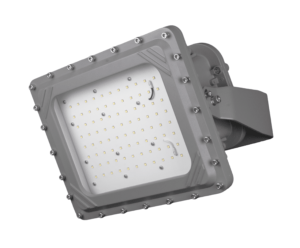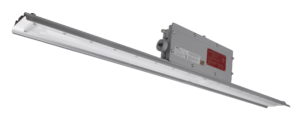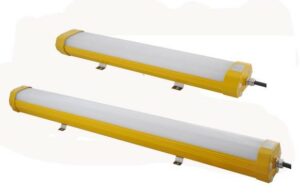Class 1 Division 2 Fixed Lighting
Explore our premium selection of Class 1 Division 2 fixed lighting, meticulously engineered to ensure safety and reliability in environments with intermittent exposure to hazardous gases and vapors. These lighting solutions are perfect for industries such as oil and gas, chemical processing, and wastewater treatment.
Show more
Our Class 1 Division 2 lighting fixtures come from top manufacturers and meet the highest safety standards, ensuring dependable performance in moderately hazardous conditions. Enhance workplace safety, mitigate risks, and ensure compliance with our robust and high-quality fixed lighting solutions designed for these demanding industrial environments.
Showing all 7 resultsSorted by popularity
-
%27%20fill-opacity%3D%27.5%27%3E%3Cellipse%20fill%3D%22%237a7a7a%22%20fill-opacity%3D%22.5%22%20rx%3D%221%22%20ry%3D%221%22%20transform%3D%22matrix(-33.94395%20-61.02084%2048.37218%20-26.9079%20197.7%20111.4)%22%2F%3E%3Cellipse%20fill%3D%22%23fff%22%20fill-opacity%3D%22.5%22%20rx%3D%221%22%20ry%3D%221%22%20transform%3D%22matrix(-30.55405%20-47.62558%20235.69568%20-151.20988%20270.6%20225.2)%22%2F%3E%3Cellipse%20fill%3D%22%23fff%22%20fill-opacity%3D%22.5%22%20rx%3D%221%22%20ry%3D%221%22%20transform%3D%22matrix(35.57214%20-.94643%207.35442%20276.42105%2013%20148.2)%22%2F%3E%3Cellipse%20fill%3D%22%23b5b5b5%22%20fill-opacity%3D%22.5%22%20rx%3D%221%22%20ry%3D%221%22%20transform%3D%22matrix(59.99328%2068.52978%20-57.73945%2050.54707%20111.2%20131.8)%22%2F%3E%3C%2Fg%3E%3C%2Fsvg%3E)
NICOR – XPQ1B150U50GRP Titan LED FloodLight 150 Watt LED
$1,23300 -
%27%20fill-opacity%3D%27.5%27%3E%3Cellipse%20fill%3D%22%239f9f9f%22%20fill-opacity%3D%22.5%22%20rx%3D%221%22%20ry%3D%221%22%20transform%3D%22matrix(-9.94334%2022.22257%20-36.23825%20-16.21457%20190.2%2053.4)%22%2F%3E%3Cellipse%20fill%3D%22%23fff%22%20fill-opacity%3D%22.5%22%20rx%3D%221%22%20ry%3D%221%22%20transform%3D%22matrix(15.94351%20-40.06427%20184.653%2073.48235%2054.7%20101.3)%22%2F%3E%3Cellipse%20fill%3D%22%23fff%22%20fill-opacity%3D%22.5%22%20rx%3D%221%22%20ry%3D%221%22%20transform%3D%22matrix(-143.79919%20-256.84121%2033.40164%20-18.70077%20299.4%2058.8)%22%2F%3E%3Cellipse%20fill%3D%22%23fff%22%20fill-opacity%3D%22.5%22%20rx%3D%221%22%20ry%3D%221%22%20transform%3D%22matrix(-20.28194%2050.95179%20-141.97119%20-56.51324%2065.6%20119.9)%22%2F%3E%3C%2Fg%3E%3C%2Fsvg%3E)
NICOR – XPL1B080U50GR Proteus 80 Watt LED Linear Light
$53300Price Depends on product option Make a selection to update price -
%27%20fill-opacity%3D%27.5%27%3E%3Cellipse%20fill%3D%22%239dad4b%22%20fill-opacity%3D%22.5%22%20rx%3D%221%22%20ry%3D%221%22%20transform%3D%22matrix(-14.52572%20-32.89114%2024.09168%20-10.63961%20243%20184.8)%22%2F%3E%3Cpath%20fill%3D%22%23fff%22%20fill-opacity%3D%22.5%22%20d%3D%22M318.2-5.3v130.1L137.7-14.6z%22%2F%3E%3Cellipse%20fill%3D%22%23fff%22%20fill-opacity%3D%22.5%22%20rx%3D%221%22%20ry%3D%221%22%20transform%3D%22matrix(-129.3017%20-30.69415%207.31231%20-30.80373%2025%20171)%22%2F%3E%3Cellipse%20fill%3D%22%23fff%22%20fill-opacity%3D%22.5%22%20rx%3D%221%22%20ry%3D%221%22%20transform%3D%22rotate(-58.9%209.5%20-5.9)%20scale(55.53502%2044.63992)%22%2F%3E%3C%2Fg%3E%3C%2Fsvg%3E)
Cary Technology KLE1011 Explosion Proof LED Linear Light
$25808Price Depends on product option Make a selection to update priceImport tariffs charged -

371DST-240 Commander Double Strobe Light
$1,79200Price Depends on product option Make a selection to update price -

371DST-120 Commander Double Strobe Light
$1,79200Price Depends on product option Make a selection to update price -

371DST-012-024 Commander Double Strobe Light
$1,60000Price Depends on product option Make a selection to update price -

CRESSA CS-EXHB86-SM Led Explosion Proof Light
$53500Price Depends on product option Make a selection to update priceImport tariffs charged
- Essential for safety and operational efficiency in hazardous oil and gas environments.
- Designed to prevent ignition of flammable gases or vapors during abnormal conditions.
- Intrinsically Safe Store offers cutting-edge, certified solutions that meet stringent safety standards.
Class 1 Division 2 Fixed Lighting
In hazardous locations such as those found within the oil and gas industry, the implementation of appropriate lighting is not just an operational necessity but a critical safety measure. Class 1 Division 2 Fixed Lighting is specifically designed to meet the rigorous safety protocols required in these dangerous environments. It is paramount for industry professionals to understand the technologies that make these lighting systems essential for safe and efficient operations.
Class 1 Division 2 relates to the National Electric Code (NEC) designation for areas where flammable gases, vapors, or liquids can exist under abnormal conditions. In such spaces, the installation of standard lighting fixtures can pose significant risks, including ignition of these flammable materials. Therefore, Class 1 Division 2 fixtures are engineered to prevent the possibility of such hazards by containing any sparks or high heat within the fixture itself, thereby averting potential fires or explosions.
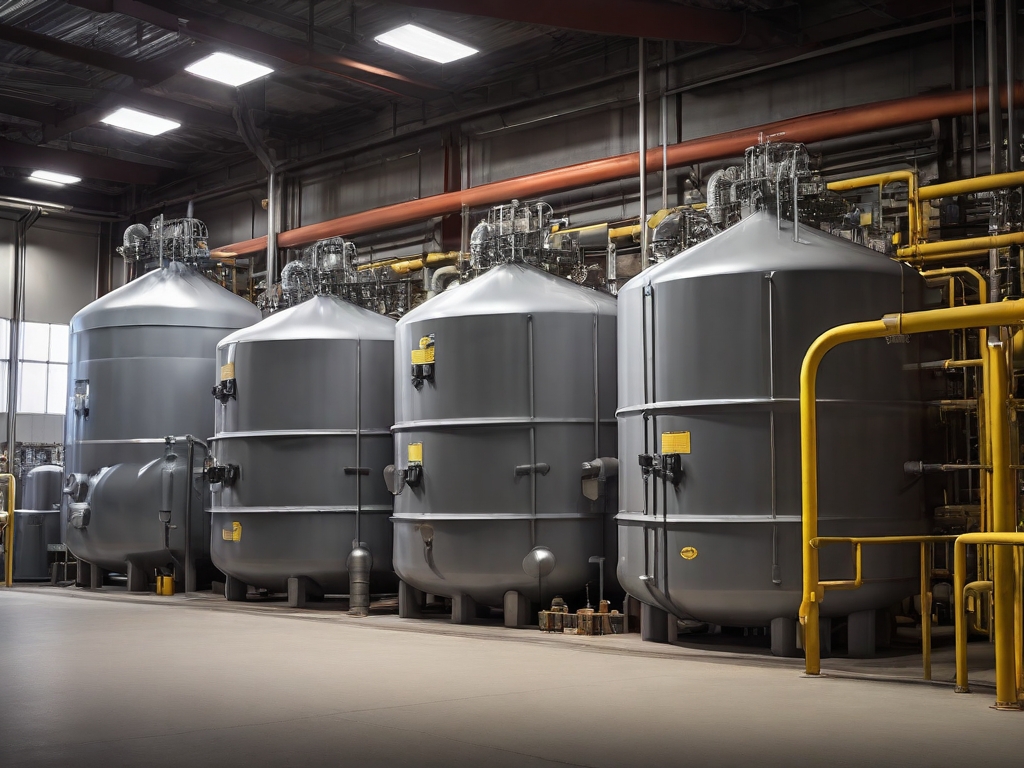 Fixed lighting in a Class 1 Division 2 area must adhere to stringent construction and testing protocols. These fixtures are built to be durable, able to withstand harsh conditions without compromising the integrity of their explosion-proof features. The lighting solutions are often made from robust materials and are sealed to protect internal components from the ingress of dust, moisture, and other foreign substances that could trigger a reaction in a volatile atmosphere.
Fixed lighting in a Class 1 Division 2 area must adhere to stringent construction and testing protocols. These fixtures are built to be durable, able to withstand harsh conditions without compromising the integrity of their explosion-proof features. The lighting solutions are often made from robust materials and are sealed to protect internal components from the ingress of dust, moisture, and other foreign substances that could trigger a reaction in a volatile atmosphere.
Moreover, Class 1 Division 2 Fixed Lighting is specifically designed to deliver consistent and reliable performance without requiring frequent maintenance. This is critical in the oil and gas sector, where every interruption can lead to significant loss of time and resources. By ensuring that lighting systems remain operational without fail, these fixtures play a direct role in maintaining the productivity of a facility.
The importance of Class 1 Division 2 Fixed Lighting in hazardous environments cannot be overstated, as proper illumination is vital for safe operation. Correctly installed and maintained lighting systems minimize the risk of accidents and ensure that workers can perform their duties efficiently, regardless of the inherent dangers in their environment. For those charged with the design and operation of facilities in the oil and gas industry, the selection of appropriate Class 1 Division 2 lighting fixtures is a critical, non-negotiable component of their safety and operational planning.
Understanding Hazardous Locations and Classifications
To properly understand the significance of Class 1 Division 2 Fixed Lighting, one must first grasp the concept of hazardous locations and how they are classified. Hazardous locations are defined as places where fire or explosion hazards may exist due to the presence of flammable gases, vapors, liquids, combustible dust, or ignitable fibers and flyings. These areas are typically found in industries such as oil and gas, where the handling of volatile substances is standard practice.
The classification of these hazardous areas is based on the nature of the hazardous material, its likelihood of being present in an ignitable concentration, and the operating conditions of the environment. In the United States, the National Electrical Code (NEC) outlines the system for classifying these locations, which is widely adopted by industry professionals.
Class 1 environments are areas where flammable gases, vapors, or liquids can be present under normal operating conditions or where such materials may exist frequently due to repair or maintenance operations or leakage. Within Class 1 locations, there are further divisions that indicate the probability of the hazardous material being present.
- Division 1: The hazardous material is present during normal operations continuously, intermittently, or periodically.
- Division 2: The hazardous material is present under abnormal conditions, such as a container failure or system breakdown.
Fixed lighting in Class 1 Division 2 areas must be designed to prevent the ignition of the specified flammable elements. This means that in the event of a failure or an abnormal condition, the lighting fixture will not become a source of ignition. It is crucial for safety that these lighting fixtures meet the strict requirements for temperature, pressure, and design to ensure that they can operate safely in a hazardous environment without causing a fire or explosion.
At the Intrinsically Safe Store, we understand the importance of adhering to these safety classifications. Our range of Class 1 Division 2 Fixed Lighting solutions are built to meet these challenging operational needs, ensuring compliance with industry standards and promoting a safe working environment for all personnel. We believe that by offering certified and reliable products, we fulfill our mission of being the single source for any Intrinsically Safe and Explosion Proof certified solutions. Our commitment to safety and quality is what sets us apart and drives our efforts to provide the most advanced lighting solutions for hazardous locations.
Key Features of Class 1 Division 2 Lighting Fixtures
When it comes to operating safely in hazardous areas, lighting must adhere to stringent standards to prevent accidents and ensure uninterrupted operations. Class 1 Division 2 fixed lighting is specifically designed for such environments where flammable gases, vapors, or liquids might be present under abnormal conditions. Here are the key features that distinguish these critical lighting fixtures:
Built to Withstand Harsh Environments
Class 1 Division 2 lighting fixtures are engineered to operate in extreme conditions. They are robust and designed to withstand the harsh environments typical of the oil and gas industry. Rugged construction using materials like stainless steel or reinforced thermoplastic can resist corrosion, moisture, and the physical impacts that are common in these workspaces.
Enhanced Safety Features
The primary function of Class 1 Division 2 lighting is to provide illumination without becoming a source of ignition. Features like flame paths, which cool burning gases below the ignition temperature before they can escape into the atmosphere, make these fixtures safe for use in potentially explosive areas. Additionally, tempered glass and sealed joints prevent the ingress of hazardous elements.
Energy Efficiency
Modern Class 1 Division 2 lighting often incorporates LED technology, which provides several benefits over traditional HID or fluorescent lighting. LEDs consume less energy and have a longer lifespan, which means less maintenance and fewer replacements over time. This efficiency translates to significant cost savings and a reduced environmental impact.
Easy and Flexible Installation
The design of these fixtures considers the unique challenges of hazardous area installations. Class 1 Division 2 lighting fixtures typically offer multiple mounting options, easier wiring connections, and are designed for quick installation and maintenance without compromising the integrity of their safety features.
Compliance with Industry Standards
Compliance with relevant standards and certifications is non-negotiable for lighting in hazardous areas. Class 1 Division 2 lighting complies with National Electrical Code (NEC) requirements and other applicable safety standards such as those from the Underwriters Laboratories (UL) or International Electrotechnical Commission (IEC).
Adaptive Design for Various Applications
Given the diverse operations within the oil and gas sectors, Class 1 Division 2 lighting is available in different configurations to suit various applications. From floodlights for wide area illumination to task lighting for focused work, each fixture is optimized for its intended use while maintaining the required safety standards.
By incorporating these features, Class 1 Division 2 lighting fixtures play a crucial role in the safe and efficient operation of facilities in the oil and gas industry. Professionals in these sectors can rely on the Intrinsically Safe Store’s comprehensive range of lighting solutions to meet the specific needs of their hazardous locations.
Comparison with Class 1 Division 1 Lighting Solutions
When addressing lighting solutions within the hazardous locations of the oil and gas industry, both Class 1 Division 1 (C1D1) and Class 1 Division 2 (C1D2) fixtures serve critical roles, but their applications are determined by the distinct environments they are designed for.
C1D1 lighting solutions are engineered for areas where ignitable concentrations of flammable gases, vapors, or liquids can exist all of the time or some of the time under normal operating conditions. These lighting fixtures must be capable of containing an explosion and preventing ignition of the surrounding atmosphere. Due to their robust design, C1D1 lights are typically more substantial, offer higher protection levels, and thereby result in a higher cost than their C1D2 counterparts.
In contrast, Class 1 Division 2 Fixed Lighting is ideal for locations where the presence of flammable substances is not likely to occur during regular operations and would only be present under accidental or unusual circumstances. Thus, C1D2 fixtures are designed to prevent the ignition of a hazardous atmosphere under abnormal conditions. Since the risk of explosive materials being present is lower, the requirements are not as stringent as C1D1, leading to lighting solutions that are generally less bulky, less expensive, and easier to install and maintain.
The choice between C1D1 and C1D2 lighting systems ultimately depends on the specific classification of the hazardous area as determined by the National Electrical Code (NEC). The priority is always to provide adequate illumination for safety and efficiency without compromising the operating environment’s integrity. It is imperative to select the right lighting for each class and division to ensure maximum safety and compliance with industry regulations.
The Intrinsically Safe Store provides a variety of Class 1 Division 2 Fixed Lighting options that meet the stringent safety requirements necessary for use in these less hazardous, yet still critical, oil and gas environments. Their specialized products are designed with the knowledge that even in areas labeled as Division 2, safety cannot be compromised. Each lighting solution adheres to precise industry specifications, providing confidence in operation to all oil and gas industry professionals.
Selecting the Right Class 1 Division 2 Lighting for Your Needs
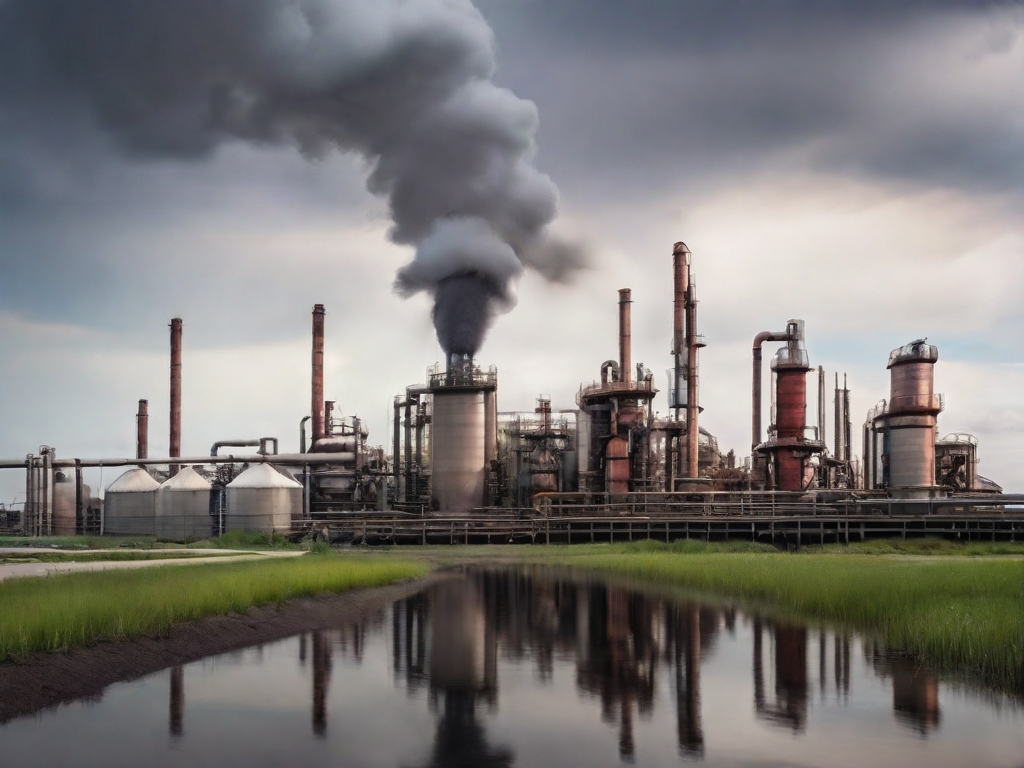 When it comes to operating safely in hazardous environments, proper lighting is critical. This is especially true within the confines of Class 1 Division 2 (C1D2) areas, where flammable gases or vapor might be present. The specialized fixtures designed for these areas must meet rigorous safety standards without sacrificing performance. Here’s how to select the right C1D2 fixed lighting for your needs:
When it comes to operating safely in hazardous environments, proper lighting is critical. This is especially true within the confines of Class 1 Division 2 (C1D2) areas, where flammable gases or vapor might be present. The specialized fixtures designed for these areas must meet rigorous safety standards without sacrificing performance. Here’s how to select the right C1D2 fixed lighting for your needs:
Understand the Requirements
First and foremost, it is imperative to understand the specific requirements of your operational environment. Class 1 Division 2 lighting is designed for use in areas where a volatile hazardous substance is handled, processed, or stored but is not normally present in an explosive concentration. Luminaires must be able to prevent any spark or heat generated by the fixture from igniting the gases or vapors present.
Assess the Area Conditions
Assessing the conditions of the area where the lighting will be installed is crucial. Consider factors such as ambient temperature, humidity, the presence of corrosive substances, and the potential for physical damage to the lighting fixtures. Lighting in C1D2 areas often requires durable construction and sealing to withstand harsh conditions without degradation.
Lighting Performance and Efficiency
The balance between safety and efficiency is a key consideration. Modern C1D2 lighting solutions are expected to deliver high performance with minimal energy consumption. LED technology, for instance, provides excellent light output and long service life while consuming significantly less energy than traditional lighting options. Assess lumens per watt, color temperature, and energy consumption to ensure the chosen lighting solution meets operational efficiencies.
Certification and Compliance
Verify that the C1D2 lighting fixtures comply with the relevant safety standards. This includes certifications from recognized bodies such as Underwriters Laboratories (UL) or Factory Mutual (FM). Products should have the markings that denote their certification for use in C1D2 locations. Always verify the certifications to ensure compliance with safety regulations specific to your industry and operational area.
Maintenance and Lifespan
Minimizing maintenance is important in hazardous environments to reduce exposure and the associated risks. Choose C1D2 lighting fixtures designed with long lifespans and low maintenance requirements. LEDs are advantageous in this regard due to their longevity and reduced need for frequent replacements. Furthermore, consider the ease of maintenance—in terms of both time and cost.
Manufacturer’s Reputation and Warranty
A manufacturer’s reputation for quality and reliability should factor into your decision. The Intrinsically Safe Store, known for providing solutions that meet the highest safety standards, can be a valuable resource in selecting C1D2 lighting fixtures. Offering a comprehensive range of products with extended warranties and supportive customer service, we emphasize dependability and quality in every solution.
In carefully selecting the right Class 1 Division 2 fixed lighting, professionals in the oil and gas industry can ensure both compliance with safety standards and operational efficiency. By examining the required certification, evaluating the specific needs of the application area, and prioritizing efficiency and durability, industry professionals can ensure the optimum lighting solution for hazardous environments.
FAQs for Class 1 Division 2 Fixed Lighting
What distinguishes Class 1 Division 2 areas from Division 1 areas?
Class 1 Division 2 areas are locations where hazardous gases or vapors are present under abnormal conditions, such as in the event of a containment failure or system breakdown. On the contrary, Division 1 areas are locations where hazardous substances are expected to be present during regular operating conditions. The distinction is critical because it directs the type of lighting and other safety equipment necessary to maintain a safe working environment.
Can Class 1 Division 2 lights be used in Division 1 areas?
No, lights certified for Class 1 Division 2 may not have the required protection for use in Division 1 areas, which require more stringent safety measures due to the higher probability of explosive atmospheres. It is essential to use lighting solutions that are specifically designed and certified for the division in which they will be operated.
What are the certification requirements for Class 1 Division 2 lighting?
Class 1 Division 2 lighting fixtures must be tested and certified by recognized testing laboratories such as UL (Underwriters Laboratories) or FM Global. They must meet specific construction and performance criteria set forth by the National Electrical Code (NEC) in Article 500, which pertains to hazardous (classified) locations. Certification ensures that the lighting fixtures can operate safely in the presence of potentially explosive gases and vapors during non-normal operating conditions.
Are LED lights available for Class 1 Division 2 applications?
Yes, LED lights are available for Class 1 Division 2 applications and are often preferred due to their energy efficiency, longevity, and reduced maintenance needs compared to traditional lighting systems. LED lighting options designed for hazardous locations are built to withstand extreme conditions while providing safe, reliable illumination.
What maintenance is required for Class 1 Division 2 lighting fixtures?
Maintenance for Class 1 Division 2 lighting fixtures typically includes regular inspections to ensure that the enclosures remain sealed, the integrity of the fixture is intact, and no damage could compromise the safe operation. It is also important to clean the fixtures and check for any signs of corrosion or wear that could affect performance. The specific maintenance procedures can vary depending on the manufacturer’s recommendations and the environmental conditions of the installation site.


























